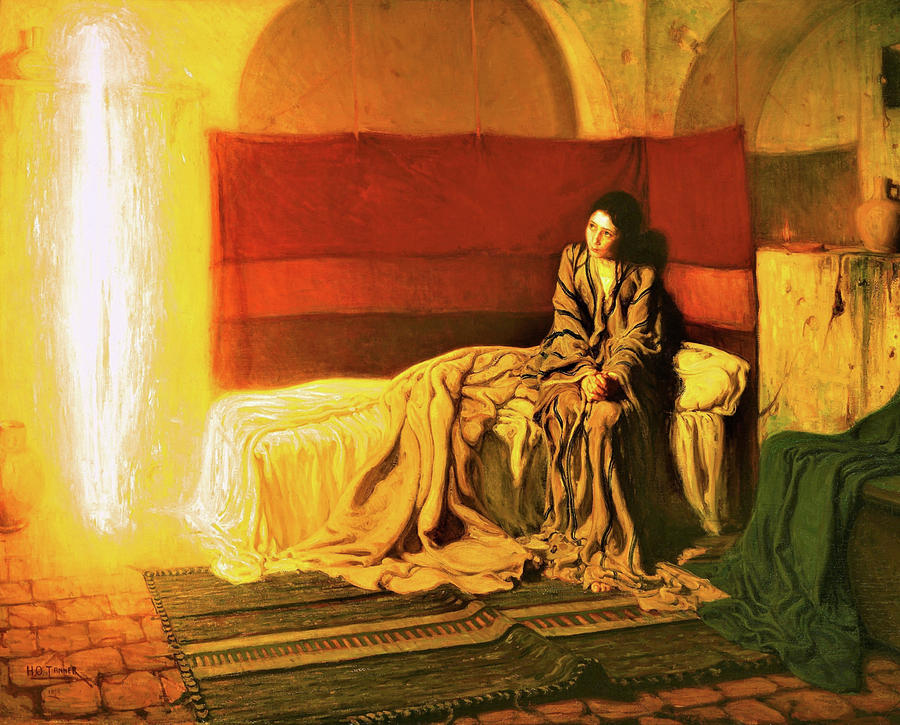Is praying the Rosary monotonous at times? Well, here are two little practices that may keep your mind focused and make you aware of what you are really praying — the meaning of the prayer and the words.

“The 1st Joyful Mystery, the Annunciation when the angel brought the good news to Mary — St. Luke 1:26-38.”
This way it keeps our mind on the biblical foundation of each Mystery and helps meditate on the life of Christ and his holy Mother. Here again is the list of Bible verses we that we use.
You will notice that we are indebted to St. Luke for many of the Mysteries, and that in by design since he is the one who interviewed Mary so as to provide the first two chapters of his gospel.
I printed out the list in a size that I could glue or tape to a 3 x 5 card. We keep a number of the cards with our Rosaries and everyone praying with us has this card in their hand — especially the grandkids.
When we pray for the virtues of “faith, hope and love” we say, “1 Corinthians 13:13” which reads, “So now faith, hope, and love abide, these three; but the greatest of these is love.”
By doing this simple practice it keeps your mind on the Scriptures, the biblical events each Mystery recalls and helps everyone stay tuned and engaged.
Second, the reciting of the decades is repetitious and can be monotonous for some of us. My mind races in other directions, I don’t mind admitting it. But I bet most people will join me in this admission.
So, here is another little technique that will make the recitation enjoyable and more meaningful, not just the auto-response over and over again without engaging.
Take the sentence, “We ran up the hill.” If we recite this simple sentence with no particular emphasis, it is just a simple, unimpressive sentence. It would be boring to say it five times in a row.
BUT try reciting it five different ways each time emphasizing a particular word with a raised voice. Here are the five ways:
“WE ran up the hill.”
“We RAN up the hill.”
“We ran UP the hill.”
“We ran up THE hill.”
“We ran up the HILL.”
This way the sentence means something very unique each time you recite it. I has five different meanings and makes reciting it five times quite interesting and expressive.
Now, apply this to the Rosary. I will give on a few examples and you can run with the rest yourself.

-
Save
So, with the 1st Hail Mary you emphasize “Hail” and think of its unique meaning to Mary. In the culture women were not so greeted. Even she was surprised by it — “She was greatly troubled at the saying, and tried to discern what sort of greeting this might be.” (Luke 1:29)
With the 2nd Hail Mary you emphasize the second word of the greeting: “Hail MARY full of grace”. Here it is a little interesting because the name Mary is not used by the angel. He simply says, “Hail Full of Grace”. But think on the name Mary, which is really Miriam — she was named after Miriam the sister of Moses.
With the 3rd and 4th Hail Mary’s you emphasize “full” and “grace” but realize that in the original Greek it is only one long word kecharitōmenē. This technical word means “you who were made full of grace in the past, and remain in that state now!” It is in the passive tense — she did not do it, God is the one who acted upon her in the past and now to make her full of grace.
God’s full flow of favor has already been concentrating upon her. Mary, more than any other human being in the Bible, is the recipient of the most impressive salutations. St. Pope John Paul II said that kecharitōmenē is Mary’s name in the eyes of God.
So, look how exciting this is and we are only on the 4th Hail Mary!
Next, with the 5th Hail Mary emphasize “the Lord” meaning God as the master of the world and history. Think of the awesomeness of the one who has sent this message.
The 6th Hail Mary emphasize that God is not far away or unknown — “the Lord is WITH YOU”.
So I think you get the idea. Give these two little tricks and try and see if the prayers are more meaningful and engaging.


